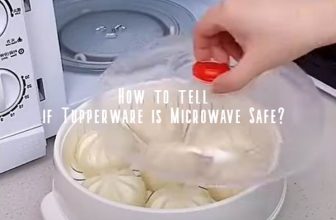![]()
In January, all Christmas leftovers go off. Only some festive food in your freezer may remain. Thus, you are to go to the local shop, buy groceries and meat products and cook again. When holidays are over, Americans work hard again. Now, you might have to eat out, but not in a restaurant. Carry your delicious, healthy dishes in flexible boxes. Are silicone containers microwave safe? Synthetic polymer material is beneficial. It withstands external pressures and high temperatures. Therefore, you can heat or freeze your handy container. Some silicone products are suitable to cook soups and bake pies. You can put them in your dishwasher. These food containers tolerate heat and continuous water exposure. Are they better than plastic ones? Are there any weaknesses? Let’s get into details.
What Kind of Containers Are Microwave Safe?
Food storage containers are handy and useful boxes. They are essential to take your food out. Unfortunately, Christmas break at schools is so short! So, now you are to pack healthy and nutritious food for your kids. Bento and food storage boxes help us to:
- Keep leftovers and food supplies clean and tasty.
- Avoid money waste due to food spoilage.
- Carry lunch to the office or school.
- Preserve kitchen ingredients like rice or spices.
Your best containers for freezing soup are durable. They are solid, versatile, and handy. Above all, sealed lids prevent odors from getting inside: they eliminate leaks and spills. Finally, modern containers withstand extremely low temperatures: but not all of them are thermal-resistant.
Microwavable lunch containers are another thing. There are only a few suitable materials. Glass and ceramic are microwave-safe but heavyweight and not convenient to carry. Most plastics don’t withstand heat. They might melt in high temperatures. Fortunately, modern polymer materials exist.
Is Silicone Better than Plastic for the Environment?
There are a lot of food-safe materials nowadays. They are non-toxic, free of harmful chemicals and green. Look at your best flour storage container. How does it look like? A top-quality box is to be lightweight and airtight. Availability of a reliable lid is a must. It’s necessary to prevent moisture and keep unpleasant odors away.
| Materials | Polypropylene | Silicone | Tritan |
|---|---|---|---|
| Density, g/cm3 | 0.86-0.95 | 1.1-1.6 | 1.0-1.1 |
| Chemical Resistance | high | superior | excellent |
| Melting Point, F | 266-340 | - | 520-560 |
| Tensile Strength, MPa | 3.8-4.8 | 2.4-5.5 | 1.8-2.0 |
Does silicone melt in a microwave? Melting point of this elastomer is absent. Silicone rubber doesn’t melt, remaining solid. At high temperatures that exceed 392 degrees, it may become brittle. Nevertheless, it resists microwaving, dishwashing and baking.
How Do You Know if a Container is Microwave Safe?
If you need to carry your lunch out, plastic boxes are a superior choice. They are pretty lightweight, easy to use even for a little kid. They are stackable and flexible enough to enable handy food storage. Being pretty solid and durable, they won’t break, if you drop a container on the floor.
Best dishwasher safe lunch box is BPA-free and non-toxic. It’s affordable but long-lasting and heavy-duty. In view of safe food handling, FDA approves several types of plastic that are safe for food contact. They include:
- HDPE;
- LDPE;
- PP;
- PS.
Find out more about dishwasher and not dishwasher-safe products! Click here for more info!
Most of them should contain only cold food or beverages. Due to quite low melting points, they don’t resist heat. Being chemically-resistant at room temperature, plastic containers may become toxic during microwaving. They would release toxic chemicals into your healthy dishes.
Therefore, selecting microwavable lunch containers for adults, look at their bottoms. There should be a sign or symbol, looking like wave lines. A recycle symbol and plastic number are to be available. Only number 5 that is polypropylene is considered safe to heat and microwave.
Is Silicone Safe for Food Storage?
To store liquid food like soups or stews, air-tight containers are necessary. They might consist of glass, plastic or stainless steel. Nevertheless, lid rims and seals are silicone. They are flexible and durable, enabling leak-proof, airtight performance.
Silicone is a polymer or elastomer that looks and performs like rubber. It’s great to ensure insulation and anti-vibration protection. Modern material, invented in the 1940s, doesn’t pollute the environment. Consisting of silica, hydrogen, oxygen and carbon, it contains no harmful chemical.
Your best silicone food storage containers are:
- lightweight;
- odorless;
- non-toxic;
- long-lasting;
- impact and temperature-resistant;
- easy to clean and use.
Silicone bakeware, utensils and containers come with sleek, non-porous surfaces. Food doesn’t stick to them. So, these products are intuitive to clean. They might become a bit slimy inside, developing a greasy film. After or before dishwashing, remove it by hand with baking soda.
Is microwaving silicone safe?
Wondering if microwaving silicone is a safe cooking technique? Let’s dispel any uncertainties and determine if your silicone companions are microwave-compatible!
The good news is that microwaving silicone is generally safe! Silicone, being both flexible and resistant to heat, can withstand microwave temperatures without melting or releasing harmful substances into your food.
For safe microwave use with silicone, it’s crucial to check that your silicone products, such as microwave-safe silicone bowls or utensils, are explicitly marked as microwave-safe. This designation assures that your silicone items are suitable for microwave usage.
It’s wise to steer clear of using silicone items lacking the microwave-safe label, as they may not endure the heat adequately, potentially leading to kitchen mishaps.
Additionally, always adhere to the manufacturer’s guidelines when microwaving silicone. Certain silicone products might have specific temperature limits or usage instructions for safe microwave operation.
Ensuring that your silicone items are clean and dry before microwaving is another valuable tip. Any moisture or food residue on the surface could result in uneven heating or unusual sounds, though it won’t harm the silicone itself.
Whether employing silicone baking molds, spatulas, or other kitchen tools, they typically serve as safe options for microwave reheating or cooking. Consider them as versatile superheroes ready to assist in your kitchen adventures!
Bottom Line
Is it safe to microwave in silicone? It’s one of the few modern inert materials; paper sacks don’t count. Silicone containers are as clean and eco-friendly as glass. Meanwhile, they are lightweight, impact, and crack-resistant. Silicone withstands extremely low and high temperatures easily. So, if you want to freeze or microwave it, don’t doubt. It won’t damage food container’s surface. They might be too flexible or collapsible to store liquid food. But silicone is great, modern bakeware and food container’s material.
Table of Contents






Are you planning on cooking in silicone cookware? There has been a lot of questions recently on Facebook and other websites talking about whether silicone containers are safe to use in the microwave. I can understand your concerns as the response has been mixed.
Silicone products have been used in cooking for a long time, and many people want to use them again in the microwave. However, there are no guidelines that help to know if they are safe to use in the microwave. After doing some research, I found out that the answer is yes. However, you must follow some rules to keep things safe.
Some people are concerned that silicone bowls may be harmful to health, but a look at the research shows no reason for alarm—and some reasons for celebration.
At first glance, the silicone microwave bowls look pretty much just like any other microwave bowl. They are a little thicker and heavier than glass bowls, but they are made from the same material and designed to heat food in the microwave. But the difference is that they are made from non-toxic silicone, so they can be used repeatedly in the microwave without any fear of toxic chemicals leaching into the food you are cooking.
Microwaving in silicone is one of the most common kitchen mistakes. Although the jury is still out on the safety of microwave use on silicone, a growing number of people are questioning whether it is safe to use in microwave ovens.
Will it melt in the microwave? Is it safe to microwave in silicone? These are two common questions people ask when considering microwave safe silicone. The truth is that microwaving silicone is perfectly safe, but it depends on the type of silicone. Silicones, or polymers containing silicone, are chemically stable and can withstand the heat of the microwave well. Most of the time, a microwave oven can be used to heat a silicone container without any problems.
Microwaving your food in plastic containers can lead to several problems. The most obvious is the fact that most plastics do not hold up well in the heat. Microwaving plastic results in the formation of tiny plastic fragments known as phytochemicals in food, which could increase your risk of cancer. More concerning, however, is the fact that plastic affects the taste and aroma of food.
Microwave ovens are generally considered to be safe for silicone products. However, there is a possibility that some non-silicone foods may stick to the insides of the microwave. As long as the food does not melt the silicone, it should be safe to use.
During the past few months, I have been using silicone products in my cooking. Ironically, I think of silicone as a non-stick, non-radiant, non-toxic, non-chemical, safe and healthy alternative for cooking, yet most of the old-fashioned silicone products that I have encountered are not safe to use in the microwave.
Microwaving in silicone containers are safe to use in the microwave, provided you follow a few guidelines. Silicone is a very heat-resistant material, so it can withstand multiple cycles in the microwave. However, microwaving in silicone isn’t completely safe. Microwaving in silicone is fine, but before you add anything else to the container, you should vent the container to make sure it doesn’t explode. That being said, if you feel comfortable in your ability to do so, go ahead and start heating up your food in a silicone container.
So, you want to know the answer to the question of whether or not silicone is toxic when heated, right? Well, the short answer is, yes, a little bit of it is. It depends on what you’re cooking, though. In fact, many different types of silicone seem to be safe to use in the microwave while hot, including medical-grade silicone. You don’t want to use the cooking equivalent of a ‘silicone’ pan in the microwave, though, since those can release harmful chemicals into your food.
Microwaving in silicone containers are safe to use in the microwave, provided you follow a few guidelines. Silicone is a very heat-resistant material, so it can withstand multiple cycles in the microwave. However, microwaving in silicone isn’t completely safe. Microwaving in silicone is fine, but before you add anything else to the container, you should vent the container to make sure it doesn’t explode. That being said, if you feel comfortable in your ability to do so, go ahead and start heating up your food in a silicone container.
If you heat silicone products in your microwave, they may leach harmful toxins into your food. Heat is known to degrade silicone products, which can cause them to disintegrate when heated. Although the silicone is destroyed, the toxins are not, and they can be present in the food you make.